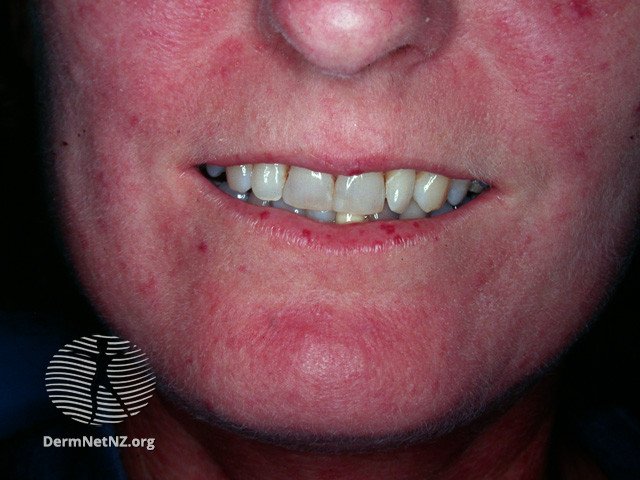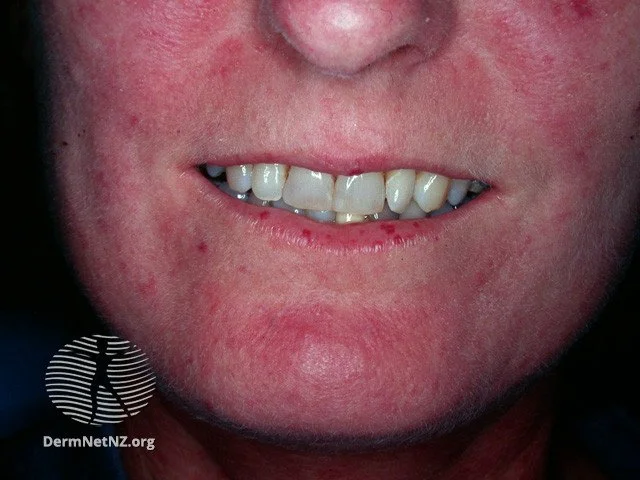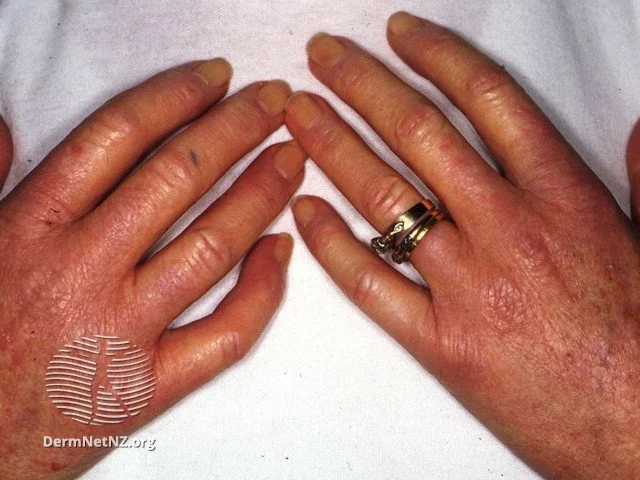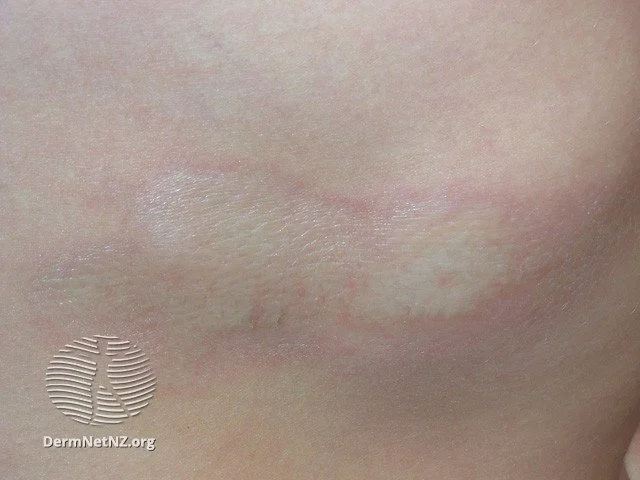
Scleroderma (Including Morphea, CREST Syndrome, and Progressive Systemic Sclerosis)
Scleroderma can manifest as tightening of the skin around the mouth with broken blood vessels (telangiectasias).
Credit: DermNet NZ
What is scleroderma?
Scleroderma is an autoimmune disease characterized by scarring, skin thickening, and vascular abnormalities, affecting both the skin and other tissues. It's broadly classified into:
Localized Scleroderma: This includes forms like morphea and typically affects the skin, particularly on the face, hands, and feet. It can occasionally appear on other skin areas but doesn't involve internal organs.
Systemic Scleroderma: This type can affect various parts of the body, including the skin, lungs, gastrointestinal tract, heart, and kidneys. Notable subtypes are CREST syndrome and progressive systemic sclerosis.
What causes scleroderma?
Both localized and systemic scleroderma arise from an autoimmune reaction leading to increased deposits of the connective tissue collagen. The exact reasons remain undetermined. Potential risk factors include:
A family history pointing to specific “HLA” gene mutations
Possible correlations with insect or tick bites, suggesting a relation to Lyme disease
Exposure to select chemicals or drugs
Frequent friction
What are the symptoms of scleroderma?
The symptoms of scleroderma vary based on its specific type. Localized scleroderma might present as small hardened skin patches or, in more severe cases, affect most of the body. Symptoms of systemic scleroderma encompass:
Puffy or swollen fingers
Fingers changing to blue, white, or purple, especially in cold temperatures
Development of ulcers on the digits
A shrinking mouth size
Calcium deposits in the skin
Itchiness
Heartburn or acid reflux
Breathing difficulties or constant coughing
Chest discomfort
Elevated blood pressure
How do I treat scleroderma?
Scleroderma's treatment can be intricate, and strategies differ based on its subtype. Systemic sclerosis often necessitates consultations with multiple specialists. Many treatments have been tried with limited success, and are beyond the scope of this writing. Common treatment options encompass:
Administering steroids either as creams, oral medications, or injections
Application of Tacrolimus ointment
Phototherapy with PUVA
Immunosuppressant medications such as mycophenolate mofetil, methotrexate, or cyclophosphamide
Intravenous infusions of immunoglobulins
Biologic agents, an example being rituximab
Tightening of the fingers consistent with both CREST syndrome and scleroderma.
Credit: DermNet NZ
Morphea is an example of localized scleroderma, and doesn't carry the same risks for internal involvement.
Credit: DermNet NZ



